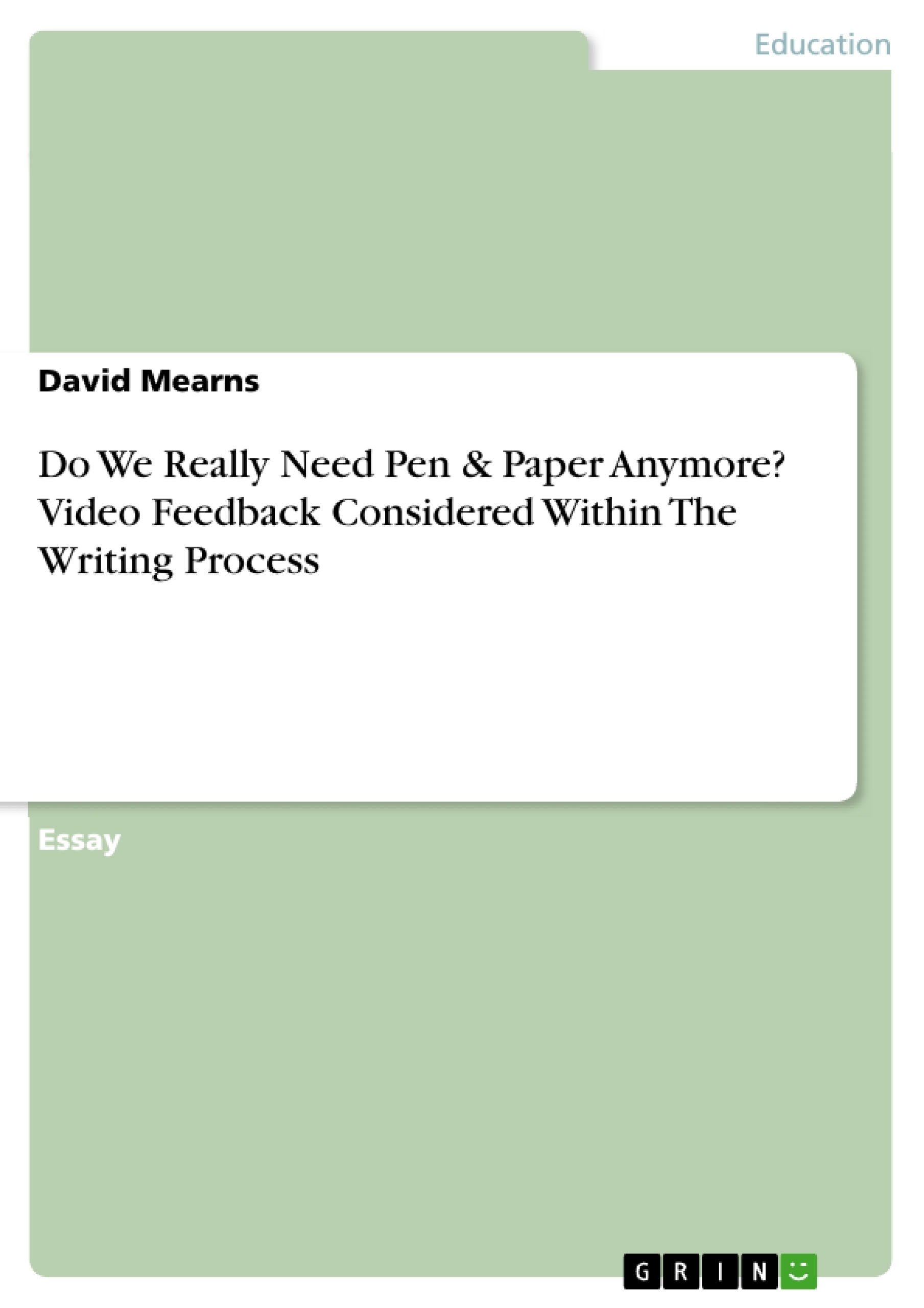The practice of giving feedback within the writing process has been the subject of many studies since the mid-1980s. The call for teachers to develop better feedback practices became apparent after studies showed that students have been generally less than satisfied with how teacher-student written feedback has been given. This chapter aims to identify how teachers may be able to offer feedback in a way that engages students, and presents them with clear messages that they will understand and appreciate. In order for this to be tangible in this context, the consideration and integration of alternative modes of learning through Information Communication Technologies (ICT) need to be realised. In particular, the use of Web 2.0 technology to assist in the writing process by giving students video feedback, instead of written feedback, on their draft papers. The primary epistemology of the proposed approach is consistent with students looking for improved methods of feedback they receive from teachers.
This paper describes ongoing ICT-pedagogical practices for improving feedback given by teachers to students at high school level. The students aged fourteen-sixteen are members of a small Turkish high school population of around three hundred pupils. Based on my own classroom research, this paper focuses on feedback given on academic essays completed within the writing process, in order to discover how students respond to a different type of feedback than that to which they have been accustomed. I will also suggest that we, as ELT practitioners, find ways to move for a change to our feedback practices, and provide students with an alternative methodology that could lead to better student-engagement and focused writing practices within this context.
Inhaltsverzeichnis (Table of Contents)
- Abstract
- Introduction
- Teacher Feedback within Process Writing
- Indirect Feedback is less stifling
Zielsetzung und Themenschwerpunkte (Objectives and Key Themes)
This paper explores the use of video feedback as an alternative to traditional written feedback in the writing process for high school ESL students. It aims to identify how video feedback can engage students, provide clear messages, and ultimately lead to improved student writing.
- The limitations of traditional written feedback in engaging students and improving writing skills.
- The potential of video feedback as an alternative method for providing constructive feedback.
- The benefits of indirect feedback in fostering student engagement and self-directed learning.
- The role of ICT in enhancing teaching and learning practices in ESL classrooms.
- The impact of video feedback on student motivation, writing quality, and overall learning outcomes.
Zusammenfassung der Kapitel (Chapter Summaries)
- Abstract: This chapter highlights the need for alternative feedback methods that engage students and provide clear messages. It proposes using Web 2.0 technology to provide video feedback instead of written feedback on draft papers.
- Introduction: The author discusses the challenges of traditional written feedback and how students often focus on grades rather than the feedback itself. Video feedback is introduced as a potential solution to enhance student engagement and improve the writing process.
- Teacher Feedback within Process Writing: This section examines existing research on teacher feedback and its limitations in promoting effective writing practices. It highlights the need for a more engaging and relevant approach to feedback.
- Indirect Feedback is less stifling: The author argues that indirect feedback, where students identify errors themselves, is a more effective learning approach. Video feedback is presented as a tool for facilitating indirect feedback and fostering student engagement in the writing process.
Schlüsselwörter (Keywords)
This paper focuses on video feedback, ESL writing, teacher feedback, process writing, ICT integration, student engagement, indirect feedback, and academic writing.
- Quote paper
- David Mearns (Author), 2012, Do We Really Need Pen & Paper Anymore? Video Feedback Considered Within The Writing Process, Munich, GRIN Verlag, https://www.grin.com/document/190477



